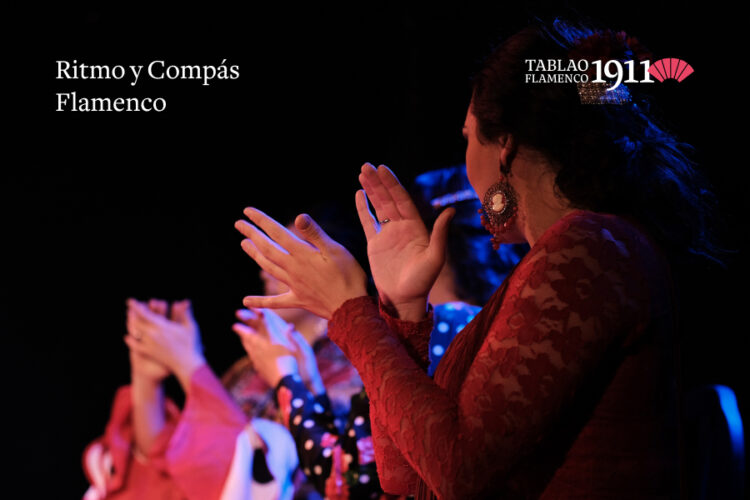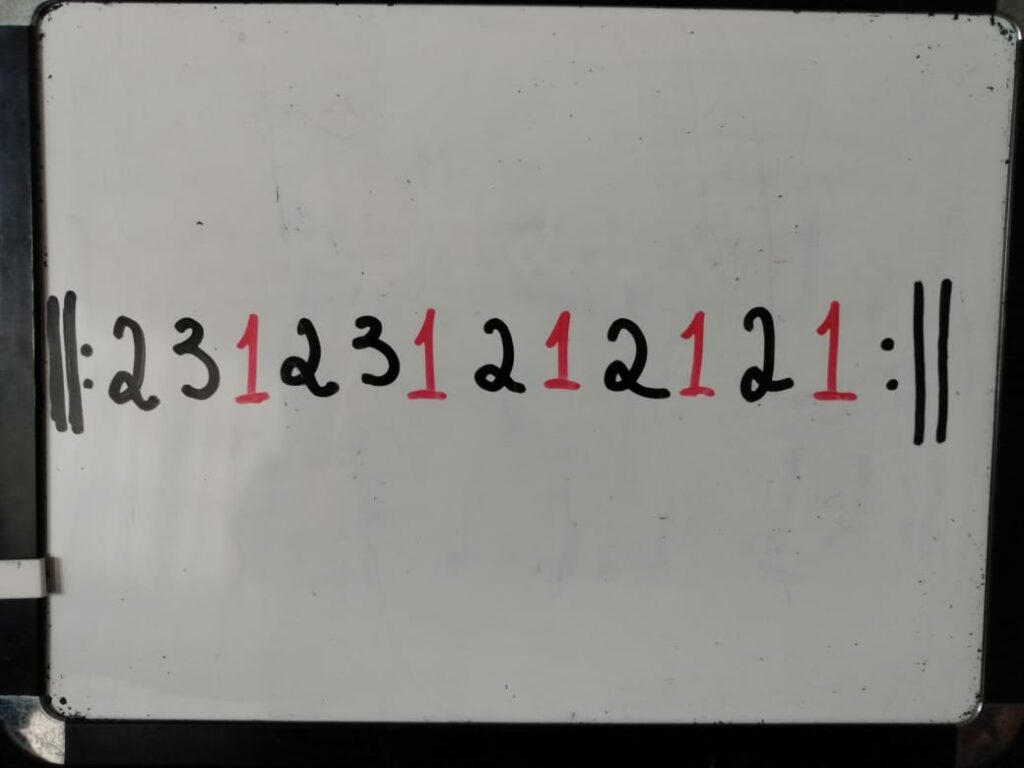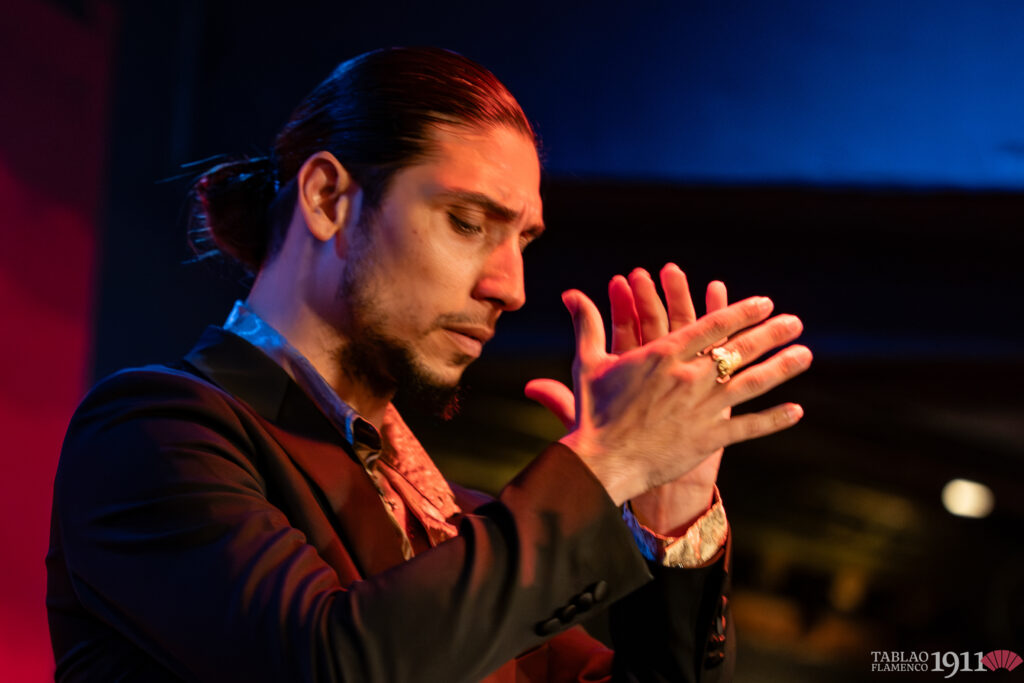
El Yiyo: The New Legend of Flamenco
The stage welcomes a flamenco phenomenon: El Yiyo.

Imagine a beat that surrounds you, a vibration that runs through your body and lifts you. That’s pure flamenco — and much of its magic lies in its rhythmic heart: the flamenco compás.
If you’ve already explored the different Flamenco Palos with us, now let’s take one more step toward the true engine that drives every quejío, foot tap, and rasgueo: rhythm.
Forget musical notation — when we speak of “compás” in flamenco, we’re talking about the rhythmic soul, the invisible structure of this art. Even though its complexity can seem intimidating, understanding its secrets will allow you to feel flamenco in a much deeper way. Ready to feel its heartbeat?
Unlike a standard musical meter, flamenco compás is a rhythmic cycle with a life of its own. It’s a repeating sequence of beats, but the key lies in the accents: emphasized beats that give each palo its unique “air” or soniquete.
This rhythmic base is the common language between singer, dancer, and guitarist — a shared structure that allows personal expression over a solid foundation. Born from the blend of Andalusian traditions and outside influences, this rhythmic richness is admired worldwide for its fascinating complexity and emotional power.
To navigate this diversity, we group the palos by their rhythmic base. Let’s explore the main families!
This is the most iconic flamenco compás. A twelve-beat cycle that transforms depending on the palo, thanks to the distribution of its accents (a common form is:
1 2 3 4 5 6 7 8 9 10 11 12).
Though sometimes explained as a blend of 3/4 and 6/8 meters, what matters is how it flows. It’s the foundation for essential palos:
Soleá: The “mother” of many styles. Its 12-beat compás is slow, solemn, heavy, full of depth.
Alegrías and Cantiñas: Also in 12, but with lively tempo and a bright, cheerful character, typical of Cádiz.
Bulerías: The party is here! Uses the 12-beat cycle, but it feels different (often starting on beat 12). It’s fast, flexible, syncopated, inviting celebration. Understanding bulería compás is essential for flamenco finales.
Others in 12: Like Soleá por Bulerías (bridging solemn and festive) or Guajira (with its own distinct flavor).

More direct (counting 1-2-3-4 or 1-2-3-4, 1-2-3-4), this compás has a very flamenco feel. It forms the base of palos like:
Flamenco Tangos: Nothing to do with Argentine tango. They are sensual, flowing, cadenced, with a sticky rhythm ideal for beginners. Tangos compás is essential.
Tientos: Slower and heavier than Tangos, with a more introspective feeling.
Rumba Flamenca: Very popular and accessible. Based on 4 beats but with a lighter feel and the typical guitar “fan” effect.
The classic 1-2-3 (1-2-3, 1-2-3…) rhythm forms another flamenco tradition. It’s the pulse of:
Fandangos: Rich, emotional, and deeply expressive palos. Fandango compás is the base of many styles.
Sevillanas: The most festive flamenco style, with a strong 3-beat rhythm. Sevillanas compás is heard at every feria.
Abandolaos: Derived from fandangos (like Rondeñas, Verdiales…), also in a marked 3-beat.
Some palos have such distinct structures that they deserve special mention:
Seguiriyas: Drama turned into rhythm. A complex blend that flamencos usually feel and count in 5 beats (1 and 2 and 3 and-a 4 and-a 5 and…). Known for its weight, solemnity, and slow tempo that “pulls backward.”
Tanguillo: The rhythm of Cádiz, festive and cheeky. Flexible, combining 4/4 and 6/8 sensations (polyrhythm), with syncopations that give it a playful, danceable character.

Understanding the cycles is just as important as listening to how they’re marked. This is where the palmas come in — a fundamental instrument and the rhythmic soul of flamenco.
Flamenco compás with palmas provides guidance, rhythm, and jaleo (energy). Palmas performers use:
Palmas sordas: Soft, hollowed, perfect for intimate moments.
Palmas claras or fuertes: Crisp and bright, ideal for marking strong accents or supporting dance.
Together with the cajón, palmas form the rhythmic architecture of the art.
Not all flamenco follows the clock. There are free palos (like Malagueña, Granaína, and Taranta in cante), where the singer expresses freely without strict compás, though the guitar may suggest a rhythmic structure.
This connects to the idea of “internal compás” — a concept deeper than meter. It’s the innate sense of time and musicality: knowing when to enter, pause, phrase around the rhythm, and play within it without getting lost. Great masters possessed this musical wisdom that moved audiences with precise yet emotive timing.
Theory helps, but compás is learned by feeling. Some useful tips:
Listen to the Base: Identify the steady pulse (guitar, palmas, cajón).
Follow the Pulse: Mark it gently with your foot or hand.
Find the Accents: Do you hear stronger beats that repeat?
Watch the Artists: Notice how their bodies flow with the rhythm.
Relax and Feel It: Don’t worry about counting at first — just let the rhythm reach you.
Reading about flamenco compás opens the mind, but nothing compares to feeling its live vibration. At Tablao Flamenco 1911, in the heart of Madrid, we offer you an immersion into the rhythmic soul of this art.
Our artists take you on an emotional journey through different compases: you’ll feel the depth of Soleá, the spark of Alegrías, the whirlwind of Bulerías, or the groove of Tangos.
The closeness of our tablao lets you experience every accent, every silence, every rhythmic game. This is the true flamenco experience — where compás comes to life.
Do you want to feel the heart of flamenco beating live?